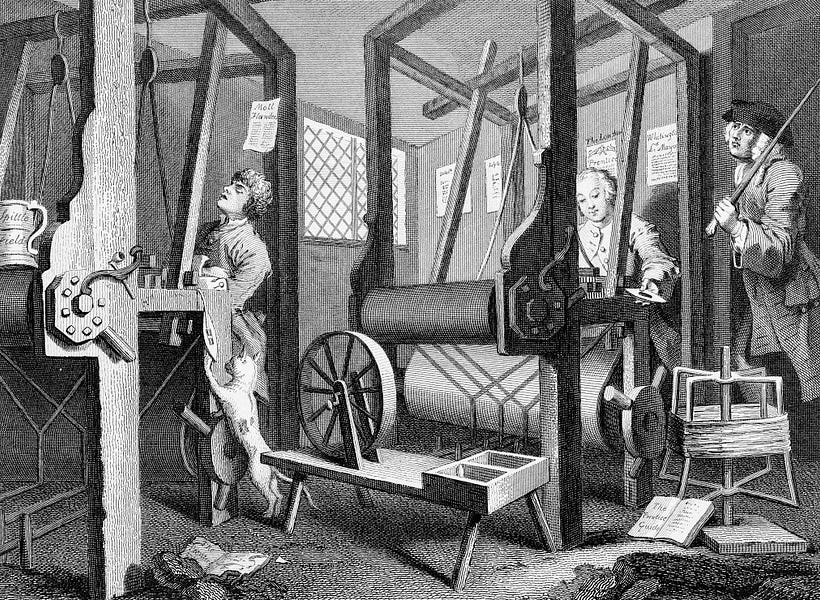Writers and creators can publish their work on Substack. Getting started with it is easy and simple. Substack lets you build an audience of loyal readers by creating a blog or newsletter. For writers who want to use Substack to its full potential, substackmckenzie is a great resource. substack pro substackmckenzie substackblog
A great way to get paid for your writing is through Substack. It’s easy to use and you can make a lot of money with it. However, there are some things you should know before using Substack. We will cover everything you need to know about Substack Pro, including how to get started. substack pro substackmckenzie substackblog
Substack allows anyone with an internet connection to start a substack blog for free. There are no limits on what you can write about or who can read your Substack blog. All you need is a computer and an internet connection. You can write about your life, thoughts, passions, or anything else you want to write about.
The thinking behind Substack & Substack Pro
When we started Substack in mid-2017, the future for writers seemed bleak. Numerous journalism jobs were being eliminated as the news industry contracted rapidly. Media businesses were left with fewer scraps as social media giants grew unabated. There was an obliteration of freelance budgets.
Despite many attempt, the damage could not be reversed. Newspapers on Spotify? Crowdfunding campaigns are driven by celebrities? The blockchain as a tool for journalism? With every misstep along the way, writers suffered through billions of dollars of venture capital.
With more talented writers serving more eager readers than ever before, journalism was at its strongest. In a matter of minutes, you could publish a story and have a million readers. The hardest part was getting paid. Journalism had been transformed by the internet, but its business model had been destroyed as well.
Substack’s business model needed to be simple, transparent, and work from day one. It might seem obvious, but it is not typical for tech startups, which have been inculcated with Silicon Valley wisdom that aggregating an audience is the primary concern and a business model follows later. By promoting this approach, backed by venture capital models that accommodated a multitude of failures, writers were given false hope numerous times over, convinced that the right combination of zeroes and ones would unlock an exciting future, only to leave them grasping at pixels in the end.
We were hyper-aware of the skepticism we might face as a Silicon Valley startup. We needed to demonstrate the trustworthiness and reliability of the Substack model. In part, Substack achieved this by making our success dependent on writers’ success: it is free to use, and we make money only when they subscribe. Independent writers retain full ownership of their mailing lists, intellectual property, and content.
We became increasingly excited by the realization that writers could work solo, do important work, and get paid by their happy readers after seeing early successes with the platform. As soon as we uncovered the secret, we wanted to spread the good word as fast as possible. When we raised money from venture capitalists, we knew we would use it to grow something that had already been successful, not to keep us afloat while we searched for viability.
We started paying advances to some writers as they got established on Substack, ranging from $10,000 to $30,000. Their revenue-sharing agreement allowed them to repay the money over time. A fellowship program was also introduced, where writers received coaching and business advice over two cohorts.
Advances were successful. Their goal was to help writers launch high-quality, profitable publications that were loved by their readers. It gave us confidence that we could invest even more deeply in writers in a way that would benefit both parties.
Advances were not without limitations, however. We could never do better than break even per deal. If a publication failed, a Substack advance would be treated as an interest-free loan. During the first few months, the writer would have a good cash cushion, but they had to get through the payback period before they started receiving revenue. To ensure that writers got paid for their work regardless of what their publication did, we devised a new structure that could absorb more risk on their behalf. This program became known as Substack Pro.
In Substack Pro, a writer receives an upfront payment for the first year they spend on the platform. In other words, the payment can be more attractive to a writer than a salary, which means they don’t have to stay in a job (or take one) they aren’t interested in. For financial security, Pro writers agree to let Substack keep 85% of first-year subscription revenue. Afterward, the deal flips, so the writer no longer gets a minimum guarantee, but keeps 90% of the subscription revenue – which, if we have made our bet right, will result in a larger payout. While some of the writers getting these deals are already well off, it allows financially constrained writers to start building a sustainable business. Most of the risk is taken on their behalf by us. As a result, they become long-term customers and contribute to the quality of the Substack ecosystem.
Substack must also be able to make money on these deals. We don’t have to make money for everyone, but we do strive to do so. Doing these deals would do more harm than good for the program if it were unsustainable since it would both compromise writers’ careers and burn their trust.
Rather than editorial decisions, we view these deals as business decisions. Story commissions and editing are not our responsibilities. We don’t hire or manage writers. It is the writers, not Substack, who own the company. Nobody writes for Substack – they write for their publications. In addition to requiring that they adhere to the content guidelines that apply to all Substack writers, we cannot contact their readers without explicit permission or attempt to influence their content. We only ask that they commit to a minimum publishing frequency so we know they’re serious.
Our Pro deals are the result of writers coming to us, referring their friends, identifying writers already on Substack with growth potential, and proactive outreach. We are starting with well-established writers who feel like “good bets,” but this program is very much in its infancy. Our fellowships, mentorship programs, educational resources, and grants will also continue to assist writers at all stages of their careers.
Our main consideration when considering a Pro deal is a writer’s chance of success with Substack. A writer’s audience size, social media engagement, and respect among readers and peers are all factors we consider. We assess how well a subject is covered elsewhere as an indicator of a publication’s market opportunity. We look for evidence that they can publish multiple pieces a week for an extended period. In this process, we don’t look at it from the perspective of a publisher, looking to gather a particular type of content under our brand, but rather as an investor, looking to stimulate a new generation of profitable media businesses. For writers to flourish, we want to support them.
With Substack Pro, as with the platform in general, we aim to host a wide range of perspectives because we believe diversity of viewpoints is essential to healthy discourse. It is inevitable that we have done deals with a small subset of controversial writers, attracting praise and scorn equally. We believe it would be a mistake to avoid making these calls even though these deals may provoke sharp criticism and even denunciation from those writers’ opponents. A writer who says anything important will never be universally loved; and sometimes those who engender the fiercest opposition will be the ones most in need of support. This is why it is important to have a free press. Heroic heroes can be villainous villains, and villainous heroes can be heroic heroes. Despite the fog of the present, history shows that this is true.
As a result of their contemporaries’ success, other writers have come to Substack independently, without taking any money from us. In many cases, staying with the standard terms and keeping 90% of the subscription revenue for themselves is the smarter financial decision, since the guaranteed payments we’re willing to offer are often dwarfed by the amount of money they can make. Many of the biggest names on the platform are included in this group, which is by far the largest. (We do not reveal the names of writers we have worked with because it is their private information, and it is up to them whether they want it publicly known.)
Since we’ve been in a “figuring it out” phase, we haven’t said anything about Substack Pro publicly. We’re observing how the deals perform over time and seeing what resonates with writers. Although it is still early in the process, we are confident that it is working. Many writers who have accepted Pro deals are on track to earn multiples of their previous salaries. Other writers have discovered and supported Substack because of their success, and their readers are helping to bring other writers to Substack.
There is no doubt that other platforms will incentivize writers similarly to Substack in the future. That’s great news. We strive to create an ecosystem that puts writers and readers in charge of the media, providing a genuine alternative to the attention economy. We will consider it a huge victory if the work we are doing today results in writers getting the autonomy and pay they deserve, regardless of where it comes from.
Our goal, however, is to do much better than that, and we intend to invest accordingly. There has been no economic reordering of media since the invention of penny papers 200 years ago as a result of subscriptions and writer autonomy. We’re increasingly convinced that writers represent tremendous economic value as well as immense cultural value because they influence the way almost everyone on the planet thinks. Our company is betting that writers have been victims of a massive market failure. The idea that writers could build one of the next great internet businesses would have seemed impossible three years ago. Nevertheless, it seems obvious to us now.
Substack Pro will be accelerated and expanded to accelerate that future. It’s still the same problems we had in 2017. Media ecosystems are in crisis. We can’t afford to wait around.
Read Out Our Blog: aptivcareyreuters


